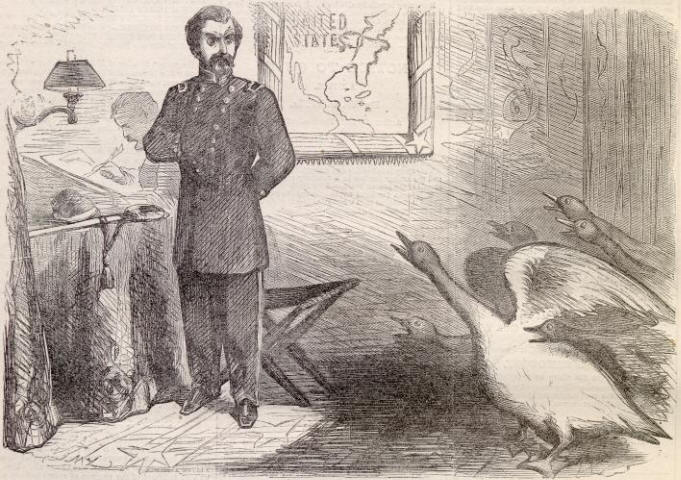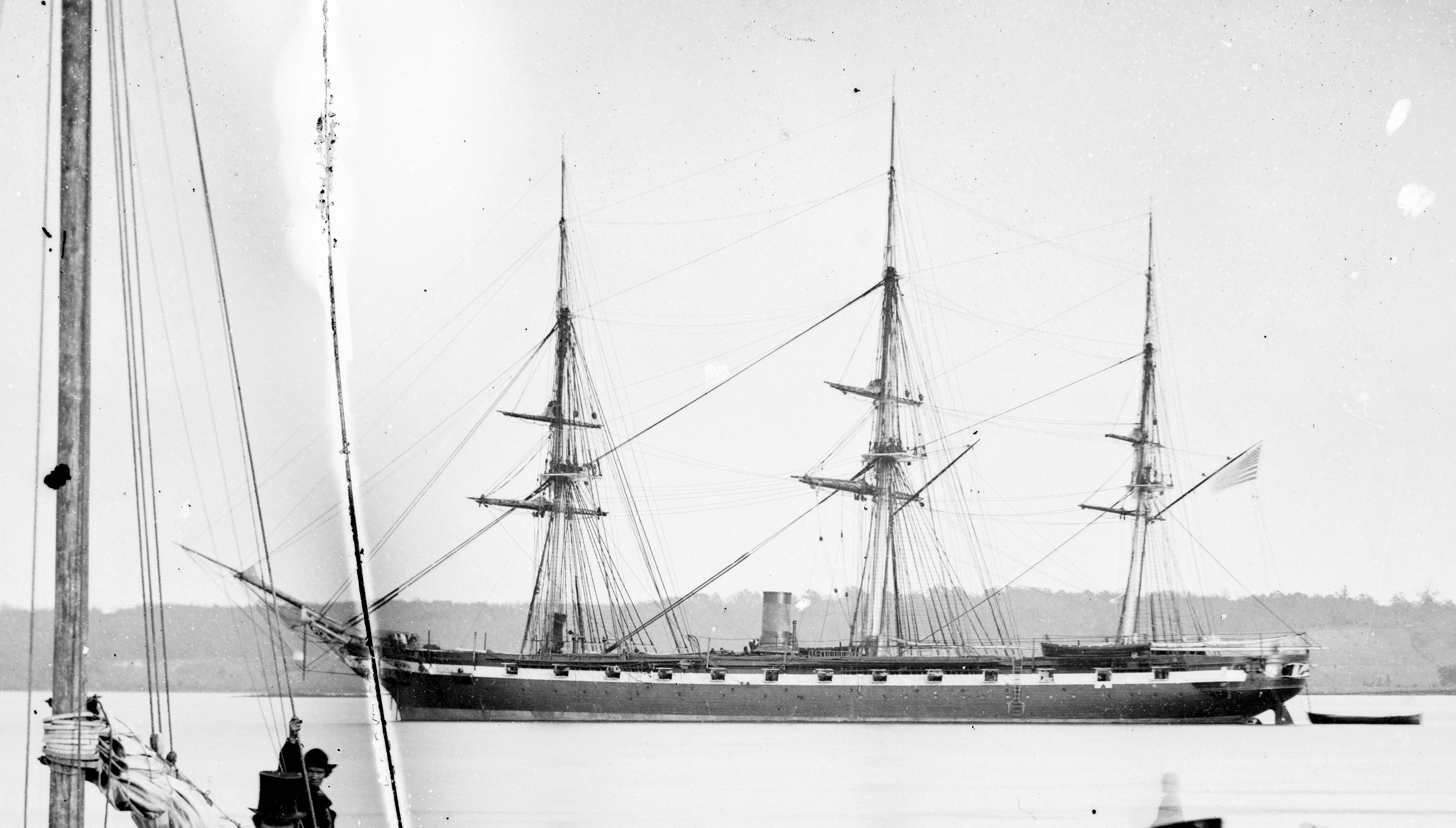In which Charles P. Stone testifies a second time
.........................................................................................................................
McClellan's winter offensive came sputtering to a halt on the last day of January. Since the end of his illness, he had worked politically to regain complete control of the U.S. war effort, and he thought he had achieved it. But on January 27, President Lincoln had issued General Order No. 1 ordering all Federal armies to begin advancing by February 22. Throughout the week he rapidly put together a plan and pitched it to the President, but on January 31, McClellan received the President's rejection--by reading a copy of Special Order No. 1, directed to the commander of the Army of the Potomac (McClellan, concurrently with his responsibilities as general-in-chief), as shown to him by a member of the press.
Ordered, That all the disposable force of the Army of the Potomac, after providing safely for the defense of Washington, be formed into an expedition for the immediate object of seizing and occupying a point upon the railroad southwestward of what is known as Manassas Junction; all details to be in the discretion of the General in Chief, and the expedition to move before or on the 22d day of February next.One thing McClellan didn't take into account was the fracturing of Lincoln's political base over the winter, best epitomized by the rise of the Joint Committee on the Conduct of the War. The Radical Republican-dominated Committee had spent most of January interviewing McClellan's division commanders about the possibility of forward advance. They had concluded it was, and they had conveyed that assurance to Lincoln's new Secretary of War, Edwin Stanton. McClellan wasn't aware of it yet, but despite Stanton's reliable Democratic politics his views on the war were actually closely aligned with the Committee's. While McClellan had spent a great deal of time consulting with Stanton before his appointment to Secretary of War, it was almost certainly Stanton who suggested Lincoln's two orders.
Stanton's regular meetings with members of the Committee had yielded another decision in their favor that struck a blow at McClellan's control of the Army of the Potomac. On January 28, almost certainly on the advice of members of the Committee who had met with him the previous day, Stanton issued an order to arrest Brig. General Charles P. Stone.
McClellan was aghast. Not only was Stone one of his handpicked division commanders (even though he had also been a protege of Winfield Scott, a rarity), but the attacks in the Republican press and in both chambers of Congress had taken on a decidedly partisan tone towards Stone's conservative politics, which happened to be McClellan's as well. Eager to avoid carrying out the order, McClellan convinced both Stanton and the members of the Committee that Stone's first, confrontational testimony before the Committee had been incomplete, and to allow him another chance.





